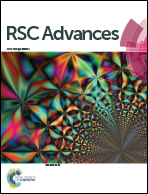Near-infrared-IIb probe affords ultrahigh contrast inflammation imaging†
Abstract
Deep tissue imaging in the near-infrared II (NIR-II) window with significantly reduced tissue autofluorescence and scattering provides an important modality to visualize various biological events. Current commercially used contrast agents in the near-infrared spectrum suffer from severe photobleaching, high tissue scattering, and background signals, hampering high-quality in vivo bioimaging, particularly in small animals. Here, we applied a NIR-IIb quantum dot (QD) probe with greatly suppressed photon scattering and zero autofluorescence to map inflammatory processes. Two-layer surface modification by a combination of amphiphilic polymer and mixed linear and multi-armed polyethylene glycol chains prolonged probe circulation in vivo and improved its accumulation in the inflammation sites. Compared to indocyanine green, a widely applied dye in the clinic, our QD probe showed greater photostability and capacity for deeper tissue imaging with superior contrast. The longer circulation of QDs also improved vessel imaging, which is vital for better understanding of biological mechanisms of the inflammation microenvironment. Our proposed NIR-IIb in vivo imaging modality proved effective for the visualization of inflammation in small animals, and its use may be extended in future to studies of immunity and cancer.



 Please wait while we load your content...
Please wait while we load your content...